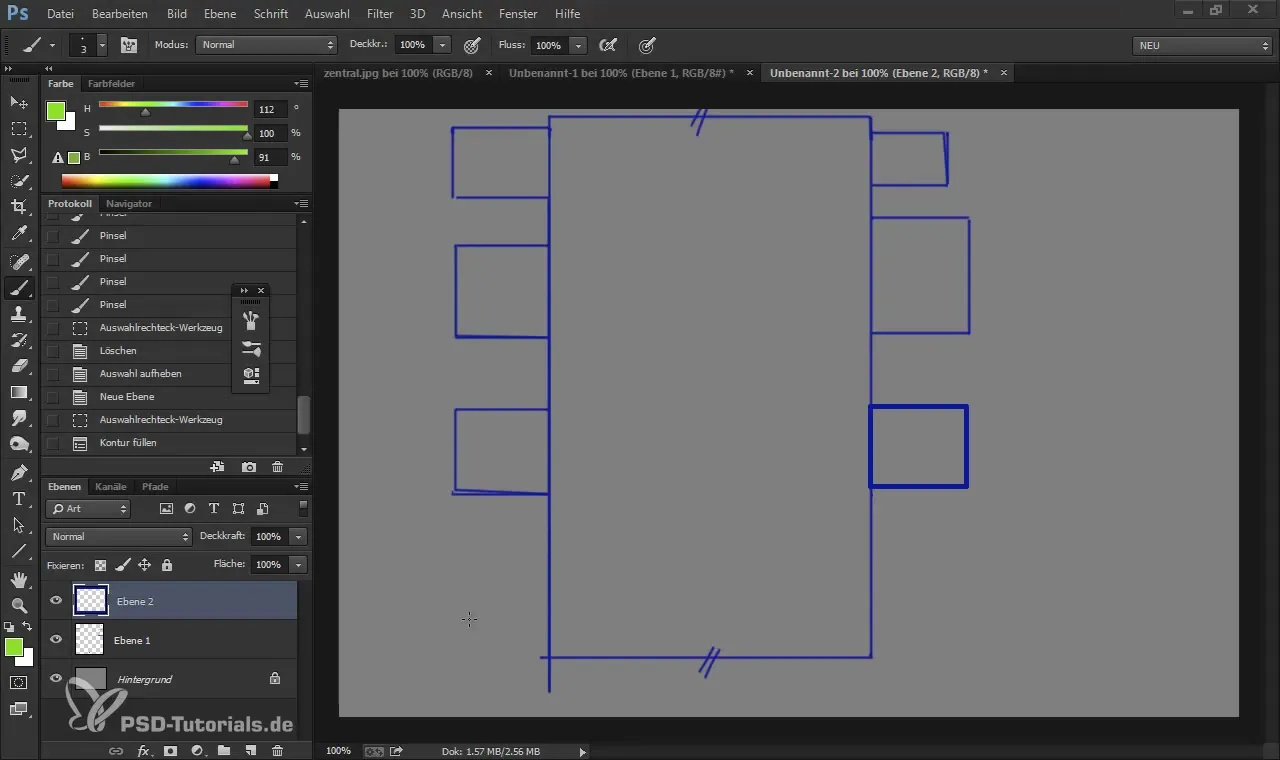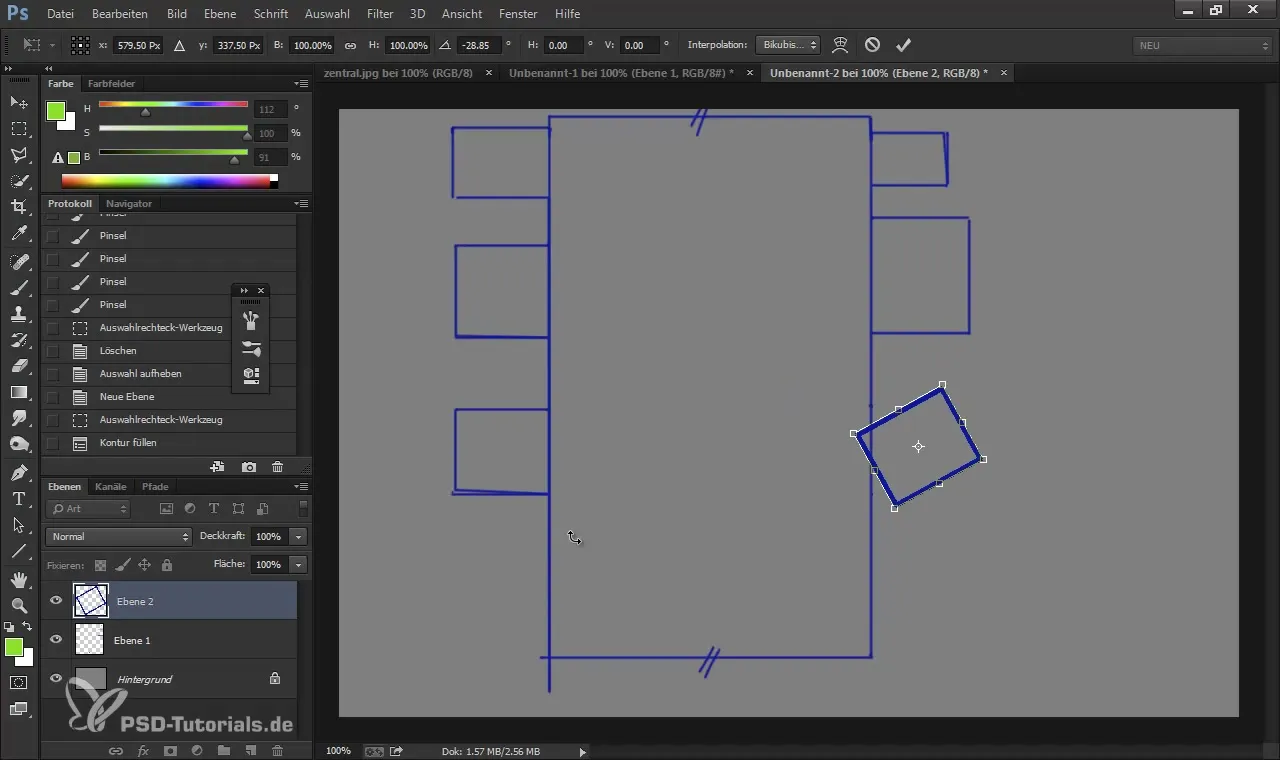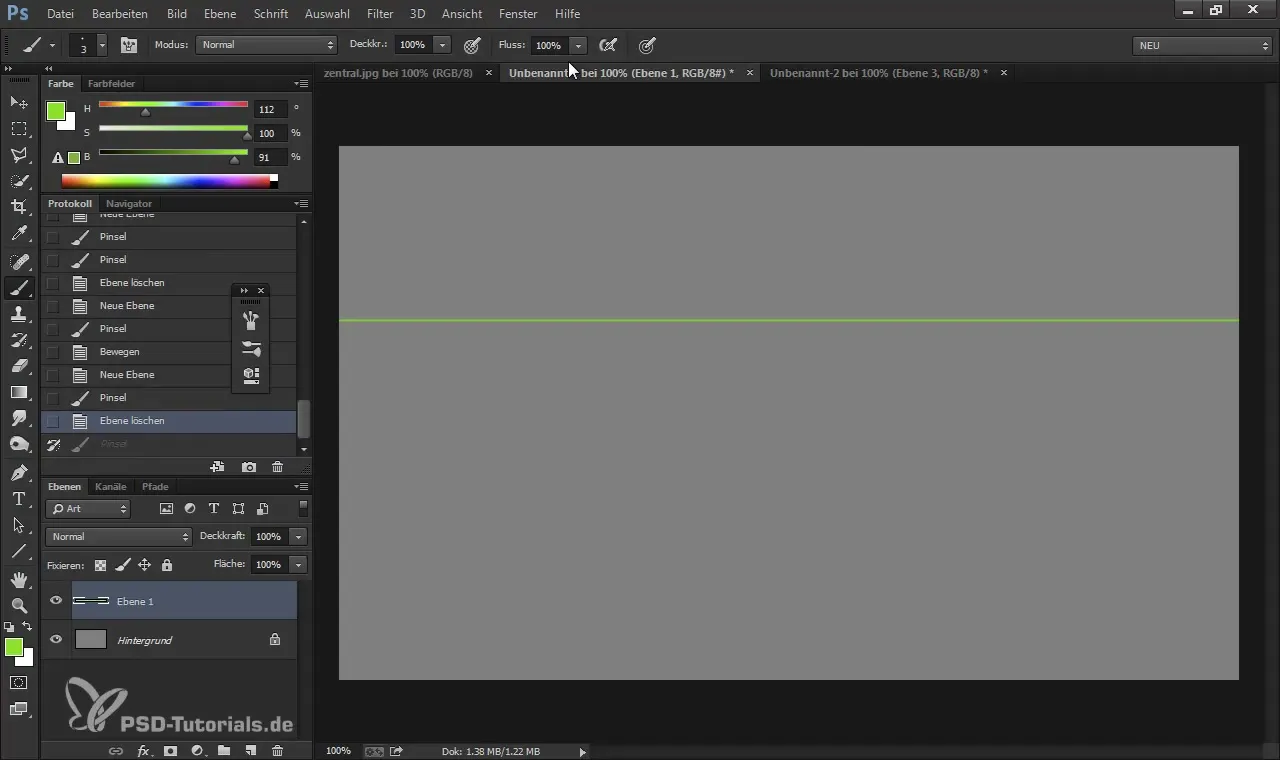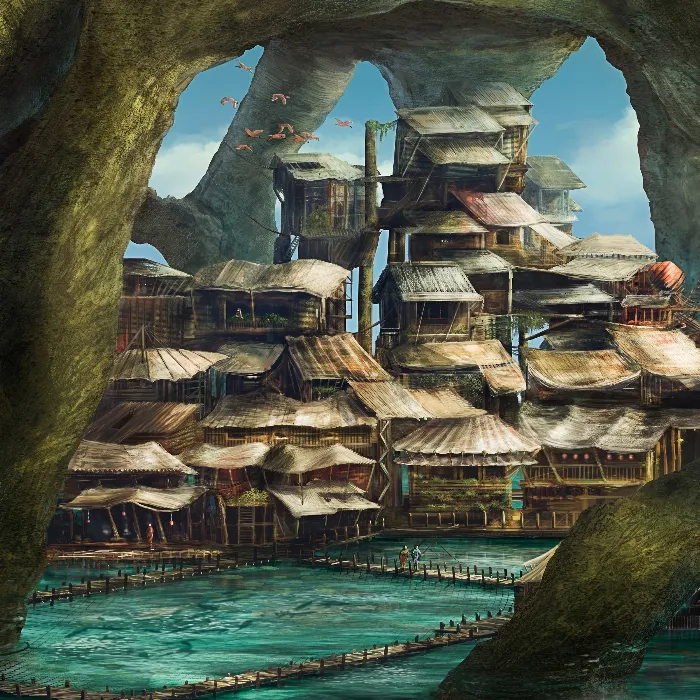The use of normal perspective, also known as two vanishing points, is a proven method for creating depth and proportion in digital artwork. This technique is not only more effective than central perspective, but also offers various ways to create an image mood. In this guide, you will learn how to combine normal perspective with bird's eye view and worm's eye view to create exciting and dynamic scenes.
Key Insights
- The normal perspective is a fundamental technique in drawing landscapes and structures.
- The use of guiding lines ensures correct proportions and simplifies the drawing process.
- The position of the horizon is crucial for the perception of the image mood.
Step-by-Step Guide
To start with normal perspective, you first need to envision a clear horizon and two vanishing points.

Start by drawing the horizon. This is the foundation for all your further work. Place the two vanishing points, one on the left and one on the right, taking the composition of your image into account.
The guiding lines are an indispensable tool. They help you accurately represent the perspective and the relationship between the objects. Draw the guiding lines so that they lead to both vanishing points.
If you want to color your image, make sure to choose colors that are pleasing and harmonious. A good practice is to start with primary colors and then adjust the brightness and hue.

The vanishing points themselves are very important for the composition. You can place them inside or outside your image, depending on how you want to shape your perspective. Each additional object can have its own vanishing points, which is very helpful in many cases.
To insert a cube into this perspective, start with the base. Draw the edges of the cube along the guiding lines to the vanishing points. This way, you can ensure that all edges are appropriately scaled and correctly aligned.
Remember that when working with normal perspective, you need to keep an eye on the height, width, and depth of an object. Each element in your image must harmoniously interact with other objects in relation to the vanishing points.
With a cube as a basic shape, you can explore the different perspectives. By adjusting the height of the horizon, you can create different moods. A high horizon can simulate a bird’s eye view and create a vast landscape.
Now experiment with bird's eye and worm's eye views. The bird's eye view allows you to see the action from above, while the worm's eye view helps you look at objects from a lower standpoint.

To draw a rectangular prism from the worm's eye view, use the guiding lines as a guide and pay attention to where the lines meet. Focus on the point where your lines intersect the cyan and magenta lines to achieve the correct perspective.
The results of these techniques will help you represent objects more vividly and three-dimensionally. Make sure to not only draw the lines but also to consider the visual depth that the perspectives create.
If you decide to depict a scene from a deep perspective, move your horizon down accordingly. This will give your image a particular dynamism and make the objects within it appear more vibrant.
Combine all these elements and techniques to create an extensive image. The key is to remain consistent while using your guiding lines, vanishing points, and horizon lines.
Summary - Guide to Digital Painting & Matte Painting in Normal Perspective
With this guide, you have a comprehensive overview of how to effectively utilize normal perspective and various viewpoints to create appealing digital artworks. The use of guiding lines and an understanding of the vanishing points are crucial to achieving the desired depth and dimension in your images.
Frequently Asked Questions
How can I best draw the guiding lines?Guiding lines should be drawn clearly leading to the vanishing points and serve as a guide for the shapes.
How does the position of the horizon affect the image effect?The horizon greatly influences the viewpoint and perception of the image – higher for bird’s eye view, lower for worm’s eye view.
Can I use multiple vanishing points?Yes, in more complex scenes, multiple vanishing points can be useful for accurately depicting different objects.
What is the difference between bird's eye and worm's eye view?The bird's eye view gives a view from above the scene, while the worm's eye view represents the view from below.
How do I find the right proportions between the objects?Use the guiding lines and vanishing points to ensure that all objects fit into the same perspective space.


